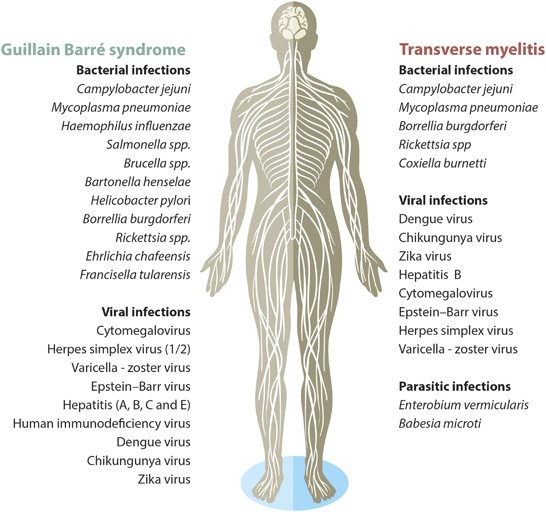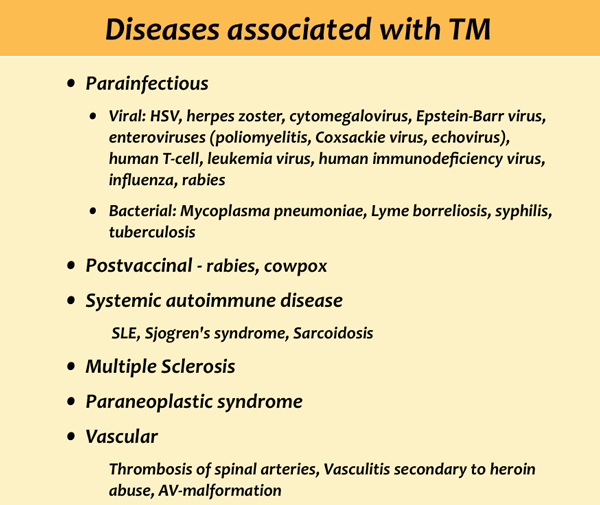transverse myelitis,what to know?
transverse myelitis














Treatments
There is no cure for transverse myelitis at this time and no medications have been specifically approved by the US Food and Drug Administration (FDA) to treat it. Treatment of transverse myelitis could include:
- Intravenous (IV — into the vein) corticosteroids such as methylprednisolone or dexamethasone may be given to help decrease the swelling in the spinal cord. In some cases, prednisone, taken by mouth, is used for a period of time after the IV therapy is completed.
- Plasma exchange (PLEX) may be ordered if no improvement occurs with corticosteroid therapy. Plasma exchange involves removing blood from the body through a needle and tubing. Through a series of steps, the plasma (the liquid part of the blood) is separated from blood cells and then replaced with an artificial plasma substitute; the plasma substitute and blood cells are combined and returned to the body through an intravenous line. The procedure lasts several hours and may be repeated multiple times over a number of days.
Prognosis
Some people affected by transverse myelitis recover with minor or no problems, others suffer permanent impairments that affect their ability to perform ordinary tasks of daily living. Permanent neurological deficits could include severe weakness, spasticity (painful muscle stiffness or contractions), or paralysis; also incontinence or chronic pain. Aggressive physical therapy/rehabilitation is indicated after an episode of TM, to aid with recovery.

Comments
Post a Comment